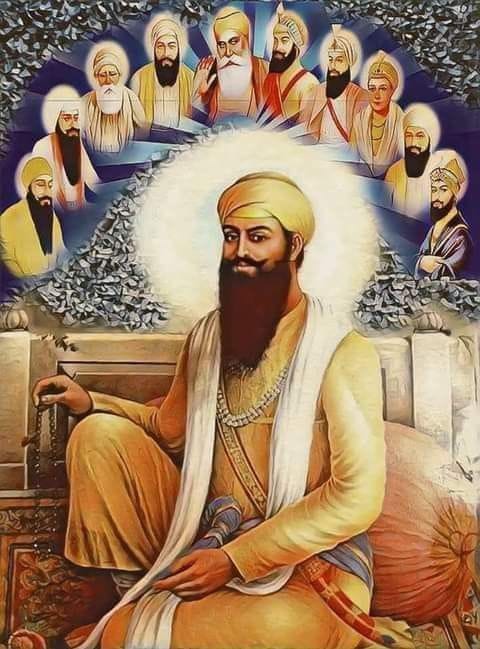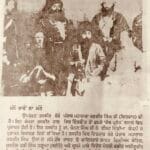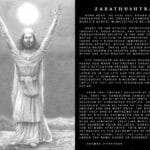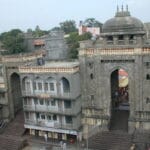Step into the captivating world of Baba Vadbhag Singh Ji, a Sikh icon whose life was a tapestry of devotion and unwavering faith. Behind the revered name lies a fascinating story that has shaped the hearts and minds of Sikhs for generations. Join us on a quest to uncover his profound teachings, unravel his spiritual journey, and witness the enduring legacy he left on the Sikh tradition.
History of Baba Vadbhag Singh Ji
Baba Vadbhag Singh Ji, a direct descendant of the revered Guru Hargobind, stands out as a major figure in Sikh history. Notably known for his military prowess, Vadbhag Singh led the Dhirmalia sect and played a key role in the famous Battle of Mahilpur. He avenged the destruction of Kartarpur by destroying Jalandhar, solidifying his place as a pivotal figure in Sikh history.
Coming from a Line of Leaders
Born in 1716 in the town of Kartarpur, Baba Vadbhag Singh’s life was steeped in Sikh tradition. His ancestor, Guru Hargobind, wasn’t simply a spiritual guide but also a warrior who believed in defending his people. It suggests that leadership and courage were deeply ingrained in their lineage. Vadbhag Singh embraced this heritage, eventually establishing the Dhirmalia sect, a branch of Sikhism with its own distinct beliefs and practices.
A Time of Battles and Alliances
The mid-1700s marked a turbulent period in Punjab’s history. Afghan invaders posed a constant threat, and in 1757, Vadbhag Singh seized an opportunity to fight back. He joined forces with Adina Beg, a powerful figure in the region. Together, they led Sikh warriors in the Battle of Mahilpur, a clash that would cement Vadbhag Singh’s place in history. The Sikh forces emerged victorious, and this win wasn’t just a military success; it symbolized resistance against oppression.
This conflict, however, held deeply personal stakes for Vadbhag Singh. The Afghans had destroyed Kartarpur, his birthplace and a city sacred to Sikhs. Fueled by this loss, he led his forces to Jalandhar, a stronghold of the invaders, and they tore it down. This act demonstrated his determination to protect his people and their heritage, even if it meant seeking retribution.
A Place of Remembrance and Healing
Today, nestled high in the Himalayan foothills in Mairi, Himachal Pradesh, stands a shrine dedicated to Baba Vadbhag Singh Ji. It’s more than just a place of worship; it’s a place where people go seeking solace and strength. Many believe that the shrine holds a special energy, a kind of spiritual power that can heal ailments and ward off negative influences.
Every year, the shrine hosts the vibrant Hola Mohalla fair, attracting thousands drawn by the festivities and the belief in the shrine’s healing aura. It’s a testament to the enduring legacy of Baba Vadbhag Singh Ji and the impact he had on people’s lives.
A Legacy That Lives On
Baba Vadbhag Singh Ji wasn’t just a warrior or a religious figure; he was a symbol of resilience and unwavering faith. His bravery on the battlefield earned him respect, while his spiritual teachings continue to inspire Sikhs even today. The shrine at Mairi stands as a reminder of his enduring influence, a place where his story continues to be told and his memory cherished.
What is the History of Baba Sang Ji?
Let’s delve deeper into how Baba Sang Ji, a revered figure in Sikh history, transformed from a devoted Sikh into a beacon of faith. As a Jat chief, his influence extended beyond religious boundaries, inspiring his community through his actions and unwavering commitment to Sikhism.
Baba Sang Ji’s profound connection with Sikhism led him to fully embrace its teachings, a sentiment shared by his entire family. This dedication caught the attention of Guru Arjan Dev, a pivotal figure in Sikh history.
Recognizing Baba Sang Ji’s fervor, Guru Arjan Dev entrusted him with a significant task: spreading Sikhism’s teachings in the Manjke region. This was no small feat, especially during a time devoid of modern communication and transportation. It demanded genuine commitment, and Baba Sang Ji rose to the challenge.
He travelled extensively, sharing the wisdom of Guru Nanak with unwavering sincerity, captivating the hearts of many. People resonated with the truth in his words, leading thousands to convert to Sikhism. Baba Sang Ji’s leadership had a profound impact.
As a testament to his lasting legacy, Baba Sang Ji’s followers constructed the magnificent Gurdwara Baba Sang, a place of worship that stands as a powerful symbol of his influence. Though he had no direct involvement in its construction, the Gurdwara embodies the love and respect his followers held for him.
Even today, long after his passing, Baba Sang Ji’s teachings resonate deeply within the Sikh community. His unwavering dedication to Sikhism and his tireless efforts to share its message serve as a source of inspiration for Sikhs worldwide. His story reminds us that the dedication of a single person can ignite a flame that transcends generations.
While this offers a glimpse into Baba Sang Ji’s life, ongoing historical research continues to unearth new information. The beauty of history lies in its ever-evolving nature as we uncover new pieces of the puzzle. For those eager to learn more, the world of Sikh history is ripe for exploration.
What is the history of Baba Buta Singh?
Baba Buta Singh Ji, a remarkable figure in Sikh history, was born in 1873 in the small village of Hadwal (now in Pakistan). Even in his youth, he displayed a deep connection with spirituality, constantly seeking a higher purpose.
In 1913, Baba Buta Singh Ji underwent a life-altering experience – he received Brahmgyan, a profound spiritual awakening, from his teacher, Bhai Sahib Kahan Singh Ji. This event became a pivotal moment in his journey, shaping his future endeavors.
Empowered by his newfound knowledge and driven by a vision of universal brotherhood, Baba Buta Singh Ji established the Sant Nirankari Mission in 1929. He envisioned a world united by love and understanding, where all beings could access divine realization. To further his mission, he set up a central hub in Sant Nirankari Colony, Delhi, which became a sanctuary for his teachings.
Baba Buta Singh Ji led the mission with unwavering passion and foresight. Before his passing in 1943, he appointed Shenshah Baba Avtar Singh as his successor, ensuring the mission’s continued growth and the preservation of his message of love and unity.
Under Baba Avtar Singh’s guidance, the Sant Nirankari Mission expanded its reach, not only spiritually but also within the community. This approach reflected the mission’s commitment to fostering inner peace and making a tangible difference in the world.
Baba Buta Singh Ji’s legacy continues to thrive through the Sant Nirankari Mission, inspiring individuals to connect with their spirituality and cultivate understanding among people from diverse backgrounds. His vision has transcended time, demonstrating the enduring power of his message and the unwavering dedication of those who carry on his work.
This is merely a glimpse into the life and enduring impact of Baba Buta Singh Ji. Those seeking a deeper understanding can find a wealth of information on the Sant Nirankari Mission’s website. It’s inspiring to witness how one man’s journey can leave a lasting mark on the world.
What is the history of Sant Baba Prem Singh Ji?
Sant Baba Prem Singh Ji was more than just a religious leader; he was a guiding light for the Sikh community, illuminating the path in matters of religion, politics, and social issues. His life story embodies unwavering dedication to strengthening the Sikh community.
Despite facing a challenging childhood marked by the loss of his mother and a difficult stepmother, he found solace and direction in Sikh teachings through the guidance of his grandfather. This led him to Dera Morala Sahib, where he immersed himself in Sikhism.
His appointment as the leader of the Dera became a turning point. He initiated the Amrit Sanchaar movement, breathing new life into the Sikh faith. He organized large-scale initiation ceremonies and even built a temple in Nankana Sahib, expanding the reach of Sikhism.
Baba Prem Singh Ji’s commitment extended beyond religious boundaries. As an elected member of the Legislative Assembly, he became a powerful advocate for Sikh rights, ensuring their religious freedom. He was also instrumental in the Samaj Vihar Sudhar movement, which aimed to uplift the Lobana community.
Education held a special place in Baba Prem Singh Ji’s heart. He firmly believed in its transformative power and established schools for both boys and girls, recognizing that knowledge was the key to a brighter future for all. His dedication earned him the well-deserved title “Champion of Education.”
While historical records may not capture every detail of his life, the existing narrative paints a vivid picture of a remarkable leader who led with compassion and left behind a legacy that continues to inspire generations of Sikhs. His unwavering commitment to his beliefs and his community serves as a shining example of selfless service.
Which god do Sikhs believe in?
Sikhs dedicate their lives to Waheguru, a unique understanding of God that transcends physical forms and limitations. Instead of picturing God as a being with a specific image, they perceive Waheguru as a limitless, timeless, and universal force present everywhere and within everyone. Imagine an omnipresent energy that has always existed, binding everything together – that’s how Sikhs approach the divine.
Rather than praying to a distant figure, Sikhs believe in connecting with this universal spirit directly. It’s less about rituals and more about cultivating a personal bond through deep meditation, selfless service, and living a life guided by Sikh principles. This constant connection allows them to see the divine reflected in everything and everyone, underscoring the values of equality and the interconnectedness of all beings.
Sikhs believe that Waheguru is not confined to any one religion. This universal force is accessible to all, regardless of their background or personal beliefs. Sikhism focuses on recognizing the shared spark of the divine within each of us, rather than seeking to convert others.
While Sikh scriptures offer valuable insights, they emphasize that true understanding of Waheguru comes from a lifelong journey of self-reflection, meditation, and living a life imbued with love and compassion for all. It’s an ongoing exploration of faith, not a fixed destination.
This inclusive approach makes Sikhism incredibly open and accepting. It challenges traditional notions about God, encouraging individuals to embark on their own personal journeys to connect with the divine both within themselves and in the world around them.
What ethnicity is Baba?
The term “Baba” doesn’t directly correspond to a specific ethnicity. It’s essential to consider the context in which it’s used. Similar to how “cool” can have multiple meanings depending on the situation, “Baba” requires us to look at the bigger picture.
Think of it like common surnames: “Smith” or “Jones” are prevalent in English-speaking countries, but they don’t reveal someone’s specific heritage. They could be Irish, Australian, American, or from various other backgrounds. Likewise, “Baba” can be a surname in places like India or Japan, but it doesn’t tell us everything about a person’s ethnicity.
Even as a title of respect, like when used for a religious leader, “Baba” doesn’t automatically point to a particular ethnicity. A “Baba” could be Hindu, Sikh, Sufi, or from any number of spiritual traditions.
It’s comparable to how “Father” is used for priests in many Christian denominations – it’s a title, not an ethnic identifier.
To determine someone’s ethnicity, we need additional clues such as family history, regional background, or even the language spoken at home. “Baba,” on its own, is just one piece of a much larger puzzle.
What is the story behind Rum Baba?
The history of Rum Baba is a delightful journey, taking us from a humble yeast cake to a world-renowned dessert.
Our adventure begins in the early 1800s, not in Paris as one might expect, but in Eastern Europe. This is where a simple yeast cake, known as “babka,” meaning “grandmother,” had its start.
Now, imagine Stanislaus I, the exiled King of Poland, finding himself in France, longing for a taste of home. He introduces his beloved babka to his pastry chef, Nicolas Stohrer. Stohrer, with his culinary ingenuity, saw the potential in this simple cake and decided to add his own flair. He infused the cake with rum and added a delectable syrup, transforming it from ordinary to extraordinary. And thus, the Rum Baba was born!
The Parisians, known for their discerning palates, were instantly captivated. The Rum Baba, with its unique flavor and elegant appearance, became an instant hit in Parisian restaurants. To elevate it further, someone had the brilliant idea of adding dried fruits, creating a delightful chewiness and enhancing the flavor profile.
But the Rum Baba’s journey didn’t end there. Its popularity transcended borders, charming dessert enthusiasts worldwide. It became a beloved treat in Italy, particularly in Naples, where it’s known as “babà.” Even Americans, with their fondness for apple pie, embraced the Rum Baba when it arrived on their shores in the late 19th century.
As with any beloved recipe, culinary creativity blossomed. Inspired by the Rum Baba, the Julien Brothers introduced the Savarin in 1844. This round, cakey delight, often soaked in various liqueurs, became a close cousin to the Rum Baba.
So, the next time you indulge in a Rum Baba, take a moment to appreciate its fascinating history. It’s a testament to culinary innovation and the enduring appeal of a well-crafted dessert.
What is the history behind Sai Baba?
The early life of Sai Baba, a revered spiritual figure, is shrouded in mystery. While the exact details remain unclear, it’s widely believed that he was born into a Hindu Brahman family. However, legend has it that he was later adopted by a Sufi fakir, a Muslim spiritual guide. This unique blend of Hindu and Muslim influences in his upbringing is said to have significantly shaped his all-encompassing approach to spirituality.
While his exact birthdate remains unknown, it’s estimated to be between 1838 and 1842. Some associate September 28, 1835, with his birth, though this date lacks definitive confirmation.
Around the age of 16, Sai Baba arrived in Shirdi, a small village in India that would become central to his spiritual legacy. He initially dedicated himself to deep meditation and spiritual practices, often secluding himself in the Babul forest. It wasn’t until around 1872 that he chose Dwarkamai, a simple, unassuming mosque, as his residence.
Dwarkamai transcended its physical form, evolving into a sanctuary of hope and spiritual guidance for people from all walks of life. Sai Baba welcomed everyone – Hindus, Muslims, the wealthy, the impoverished – with open arms, emphasizing the universal values of love, compassion, and righteousness. He believed wholeheartedly in the inherent potential for spiritual growth within every individual.
His teachings, a harmonious blend of Hindu and Islamic philosophies, emphasized leading a moral and ethical life filled with love for all beings. He steered away from rigid doctrines or rituals, focusing on the importance of inner peace and connecting with the divine spark that resides within us all.
While Sai Baba lived a life defined by simplicity and humility, his presence exuded a divine energy that drew people to him. The villagers, who witnessed his compassion and what some perceived as miraculous abilities, revered him deeply.
On October 15, 1918, Sai Baba attained mahasamadhi, a conscious departure from the physical body. Yet, his legacy of love, unity, and spiritual awakening continues to inspire millions around the world.
Want to Learn More?
This is just a glimpse into Sai Baba’s captivating life. Countless stories, teachings, and interpretations of his message are waiting to be discovered. If you’re intrigued, explore books, articles, and documentaries that delve deeper into the life and philosophy of this remarkable spiritual figure.
Citation:
- Bhide, S. (2019). Sai Baba: The Saint of Shirdi. Penguin Random House India.
What is the history of Yu Sang?
Yu Sang, the vibrant salad we toss with gusto during Lunar New Year celebrations, has a rich history that speaks to cultural exchange and culinary creativity.
Our journey begins in China’s Guangdong province, where the earliest versions of Yu Sang originated. As people migrated from Guangdong to Southeast Asia, they carried their culinary traditions with them, introducing Yu Sang to new lands.
In the 1940s, a Cantonese immigrant named Loke Ching Fatt, residing in Seremban, Malaysia, put his own spin on the dish. This marked the birth of the original Yu Sang, though it differed from the colorful creation we know today.
Over time, both Malaysia and Singapore embraced Yu Sang, adding their own unique twists. Fresh, raw fish, a vibrant array of shredded vegetables, and a medley of tantalizing sauces and condiments transformed Yu Sang into the modern dish we know and love.
Yu Sang’s evolution exemplifies the beauty of culinary fusion, where food transcends borders and adapts to new cultural landscapes. It’s a delicious reminder that the most cherished things are often best shared and enjoyed together.
What is the History of Baba Gurgur?
In the heart of northern Iraq lies Baba Gurgur, a site of geological wonder and historical significance. This is where the earth seemingly breathes fire, where a flame has danced for centuries – the famed Eternal Flame.
Baba Gurgur is a natural gas field, fueled by gas seeping up from deep within the Earth. This continuous flow of natural gas feeds the flame, creating a spectacle that has captivated onlookers for ages.
Deep beneath the surface lies the Main limestone formation, a geological structure that acts as a massive reservoir for natural gas. Cracks and fissures in the Earth’s crust provide a pathway for this gas to reach the surface. When the escaping gas ignites, it creates the mesmerizing Eternal Flame.
Baba Gurgur’s significance extends beyond its geological marvel. In 1927, oil companies struck oil in the area, marking a pivotal moment in Iraq’s history. This discovery led to the development of the Kirkuk oil field, a significant player in the global oil industry.
The name “Baba Gurgur” itself, meaning “Father of Fires” in Kurdish, highlights the site’s cultural and religious importance. For centuries, this enigmatic flame has drawn pilgrims and those seeking blessings. Some even believe it’s connected to the fiery furnace mentioned in the Book of Daniel.
Baba Gurgur stands as a testament to the power of nature and humanity’s enduring fascination with the unknown. As scientific exploration continues, we are likely to uncover even more about this extraordinary site and its fiery past.
To learn more about the life and times of the courageous Sikh warrior Hari Singh Nalwa, we invite you to explore the annals of history at history of hari singh nalwa.
















1 thought on “Unveiling the History of Baba Vadbhag Singh Ji: A Sikh Legacy”
Comments are closed.